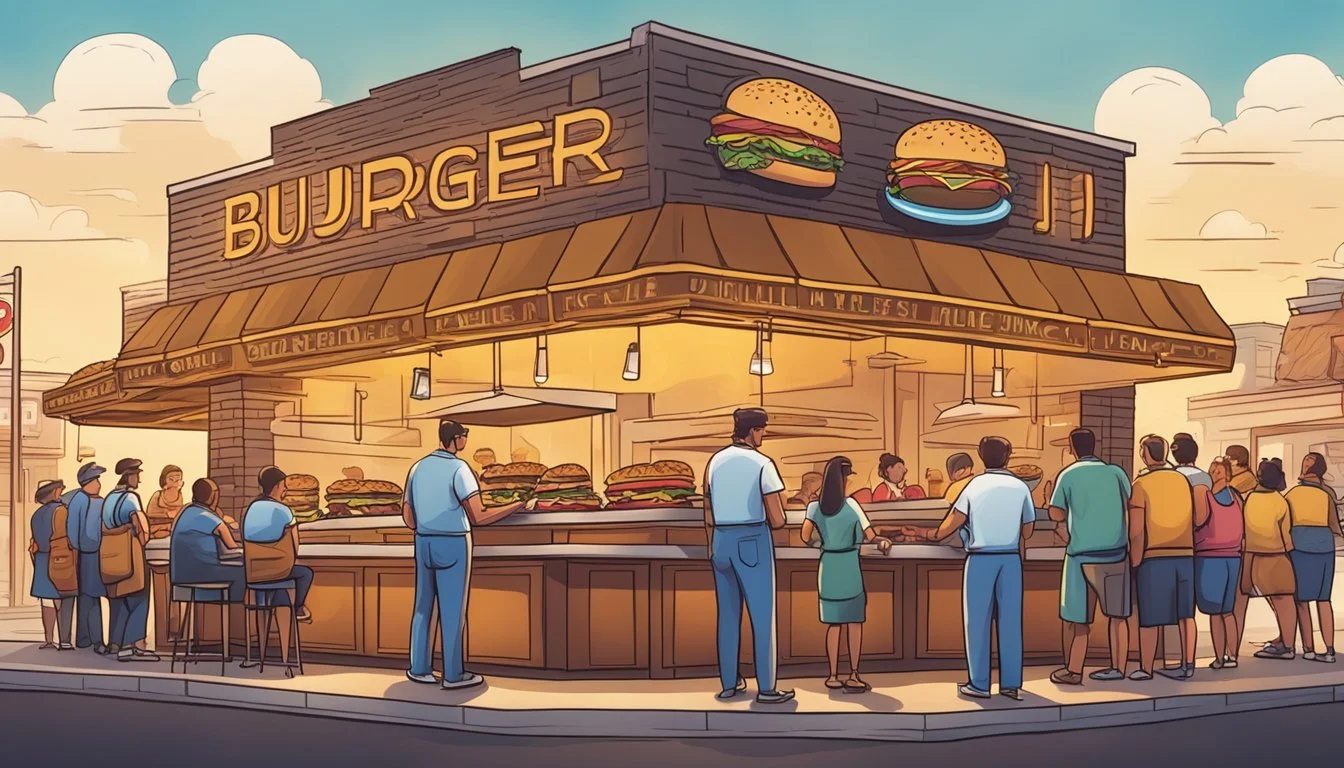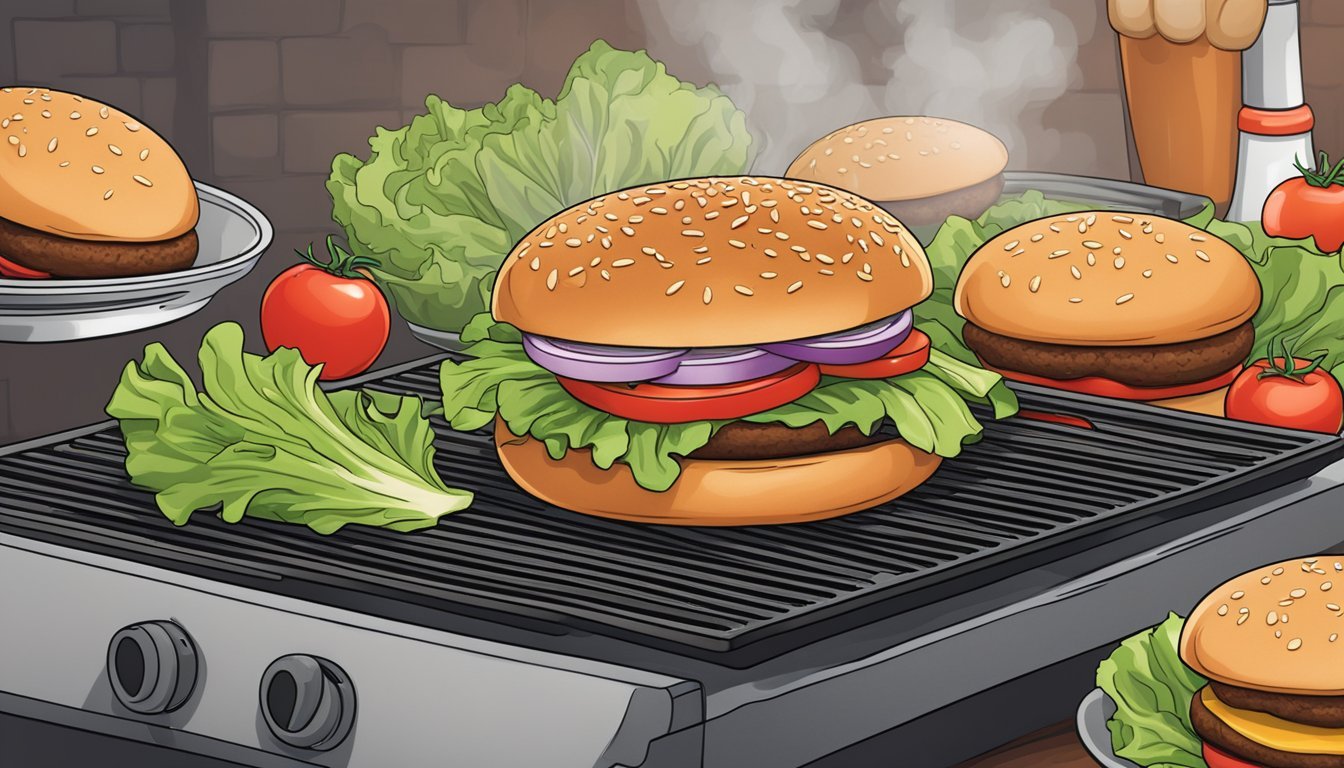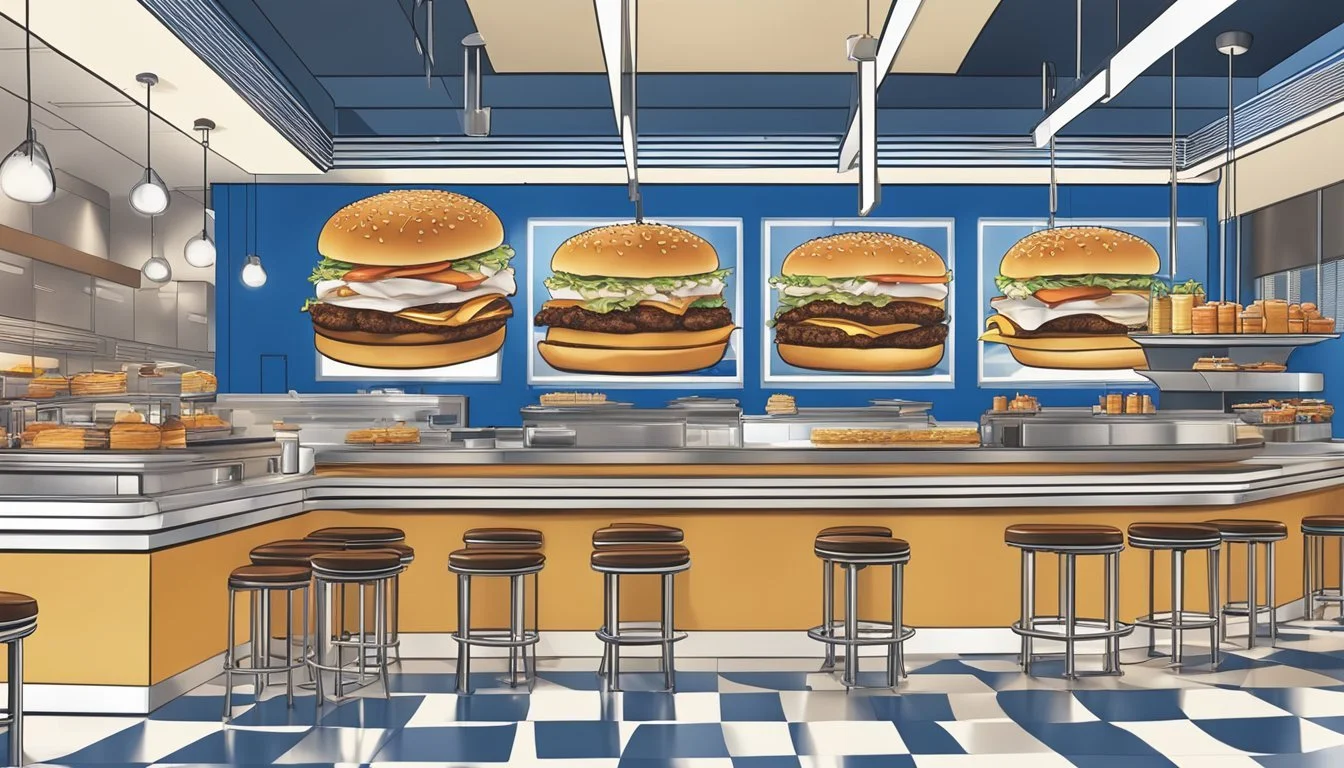White Castle vs Smashburger
A Comparative Analysis of Burger Excellence
When stepping into the world of fast-casual dining, burger aficionados often find themselves at a culinary crossroads between White Castle and Smashburger. These two burger joints represent distinct corners of the hamburger spectrum, each with its unique appeal. White Castle boasts a storied history as one of America's original fast-food hamburger chains, infamous for its small, square sliders that have carved out a notable place in burger history. Known for pioneering the concept of the fast-food hamburger, White Castle has remained a cultural staple, espousing simplicity and affordability.
On the other hand, Smashburger brings a more modern approach to the realm of burgers with its focus on specialized techniques and upscale toppings. Smashburger's claim to fame rests on its certified Angus beef patties—smashed and seared on the grill to create a caramelized exterior that seals in the juices. Presenting a myriad of options for customization, Smashburger appeals to those with a palate for tailoring their burger experience. As they navigate through choices from artisanal buns to a variety of gourmet extras, customers at Smashburger can craft a burger that suits their individual tastes.
Analyzing the merits of White Castle versus Smashburger entails more than just a comparison of taste; it's a dialog about the evolution of the American burger experience. Each brand encompasses a different philosophy and demographic, yet they both strive to satisfy the perennial craving for a well-crafted burger. Determining which burger joint is better isn't merely a matter of preference, it's a reflection of one's own burger ideology.
History and Origin
In the landscape of American fast food, two burger joints possess distinct histories that reflect their contributions to the industry. White Castle boasts a long-standing tradition in the fast food realm, while Smashburger represents a modern approach to burger crafting.
White Castle's Legacy
White Castle was established in 1921, making it one of the earliest fast-food chain restaurants in America. It was founded by Billy Ingram and Walter Anderson in Wichita, Kansas. They are credited with pioneering the concept of the fast-food burger chain, popularizing the small, square hamburgers known as "sliders." Their focus on small, affordable burgers transformed the eating habits in the United States and laid the groundwork for what would become the modern fast-food industry.
Smashburger's Emergence
Smashburger entered the fast-food scene much later, with its inception in 2007 in Denver, Colorado. Founded by Tom Ryan, the chain introduced a novel technique of cooking burgers: smashing the beef patty on a hot griddle, which creates a caramelized exterior. This method highlights the Maillard reaction, enhancing the burger’s taste and texture. Smashburger swiftly expanded across the country, positioning itself as a fast-casual restaurant that offered a higher quality of hamburger using fresh, not frozen, beef and a variety of gourmet toppings and sides.
Menu Offerings
When it comes to choosing between White Castle and Smashburger, the menu options offered by each brand tell a compelling story of classic tastes and innovative approaches to the beloved American burger.
Signature Burgers at White Castle
White Castle is renowned for its iconic sliders. These small, square burgers have been a staple since the chain’s inception. The Classic Slider is simple yet satisfying, featuring a steam-grilled beef patty with onions and pickles on a soft bun. White Castle's sliders come in a variety of options, including the Cheese Slider and even fish and chicken sliders, catering to a range of tastes.
Smashburger's Menu Highlights
Smashburger, on the other hand, is known for its Classic Smash, a burger that consists of a hand-packed, certified Angus beef patty that's smashed on a hot grill to sear in the juices. The Classic Smash is then served with American cheese, lettuce, tomatoes, ketchup, onion, pickles, and Smash Sauce on an artisan bun. Their menu also offers a range of smashburgers, including a Double Cheeseburger and other premium options like the Avocado Club Burger and regional specialties tailored to local tastes.
Quality of Ingredients
When considering White Castle versus Smashburger, the sourcing and quality of ingredients such as beef, cheese, and produce play an integral role in the culinary experience offered by these burger joints.
White Castle's Ingredient Sourcing
White Castle has established a reputation for serving a distinctive type of burger, referred to as "sliders," which are small, square-shaped beef patties cooked on a bed of onions. While White Castle has not traditionally been known for touting the origins of its beef, customers have long associated the brand with its convenient and consistently prepared beef sliders. The beef patties are steam-grilled over a bed of onions, resulting in a moist and flavorful patty that guests enjoy in large quantities. Furthermore, White Castle serves American cheese on their sliders, which is known for its melty characteristic that complements the savory beef.
Smashburger's Commitment to Quality
Smashburger, on the other hand, explicitly markets their burgers as being made from 100% certified Angus beef, which is known for its high-quality due to the breed's standards for marbling and tenderness. The Angus beef patties are fresh, never frozen, and are "smashed" to sear in their juices, creating a caramelized exterior that enhances the flavor and texture of the protein. Toppings like artisanal lettuce, tomatoes, pickles, and farm-fresh onions elevate the overall taste profile. The choice of cheese, whether it's American or another type, is chosen to complement the rich taste of the Angus beef. Smashburger's commitment to high-quality ingredients is central to their brand identity and is a hallmark of their offerings.
Cooking Techniques
In comparing White Castle and Smashburger, it's essential to examine their distinctive cooking techniques, which are central to their identity. Each method has its unique aspects that contribute to the flavor, texture, and overall burger experience.
Grilling Methods at White Castle
White Castle has a notable cooking technique that differentiates it from many other burger joints. The method is steaming over a bed of onions. On a specially designed grill, burgers—referred to as 'sliders'—are placed on a pile of onions, which allows them to cook through a combination of both steam from the onions and the heat of the grill below. This technique does more than just cook the meat; it infuses the patty with the flavor of the onions, resulting in a moist and flavorful slider.
Smashburger's Cooking Style
Smashburger, on the other hand, uses a technique that involves smashing the burger. Here’s how it works:
Initial Smash: Upon placing a beef ball on a hot griddle, it is pressed down firmly with a metal spatula for about 10 seconds, creating a sear and starting the Maillard reaction, which intensifies the flavor. This reaction is key, as it’s responsible for the complex flavors and crispy edges that smash burgers are known for.
Timed Cooking: Unlike White Castle's method, after the initial smash, the patty is not pressed again. It is then cooked until the edges show signs of being done, usually for about 1 to 2 minutes, before being flipped.
Each restaurant's method—whether it's steaming on top of onions or smashing on a griddle—caters to an audience that appreciates the distinct texture and taste produced by their respective cooking styles.
Taste and Flavor Profiles
When choosing between White Castle and Smashburger, one's preference often hinges on the distinctive flavor profiles each offers. How they season their patties, the unique sauces, and the choice of toppings contribute significantly to the overall taste experience.
Analyzing White Castle's Flavor
White Castle is famous for its small, square sliders that possess a unique taste. These sliders feature a steam-grilled beef patty on a bed of onions, which infuses the meat with a moist and savory onion flavor. Sauce is typically minimal, allowing the combination of beef and onions to shine through. The bun is soft and often absorbs the onion-infused juices, adding to the taste complexity. White Castle's minimalist approach to toppings and absence of a signature heavy fat content characterizes their sliders as lighter options.
Dissecting Smashburger's Taste
Smashburger, on the other hand, is known for its bold flavors and gourmet approach. The Angus beef patties are smashed on a hot griddle, creating a caramelized crust that enhances the meat's flavor. Their special sauce, named "SmashSauce," is a concoction that adds a tangy and savory layer to the taste profile. A distinguishing feature of Smashburger is their willingness to experiment with toppings, such as smashed avocado, brisket, and Anaheim chiles. The quick-cooking method used for the thinly smashed patties provides a satisfying contrast of a crispy exterior with a juicy interior, showcasing a higher fat content which helps to lock in a rich taste.
Health and Nutrition
When deciding between White Castle and Smashburger, health and nutrition play crucial roles. Consumers should consider caloric content and nutritional value, including protein, fat, and sodium, to make informed dietary choices.
Caloric Content Comparison
White Castle's Original Slider remains widely recognized for its modest size, translating to a lower calorie count. According to search results:
Calories: 140
Fat: 7 grams
Protein: 6 grams
Sodium: 380 milligrams
On the opposite end, Smashburger's Classic Smash Burger presents a heftier option:
Calories: 540
Fat: 31 grams
Protein: 27 grams
Sodium: 1280 milligrams
Nutritional Value Assessment
White Castle's burger is advantageous for those tracking intake due to its lower fat content and reduced caloric burden. With only 7 grams of fat, it appears as a lighter choice, particularly relevant for consumers adhering to a calorie-conscious or reduced-fat diet.
Smashburger, conversely, offers a burger with a higher protein content, which could align better with a protein-centric diet, such as keto, despite its higher calorie and fat content. The Classic Smash Burger's protein content stands at a robust 27 grams, making it a substantial meal from a protein standpoint.
In terms of sodium, White Castle’s offering may appeal to those seeking to limit their sodium intake, with only 380 milligrams per slider, whereas Smashburger's option is significantly higher, which could be a concern for those monitoring their sodium consumption for health reasons.
Price Points and Value
When comparing White Castle and Smashburger, the discussion often centers around price points and the value offered for the money spent. Both restaurants cater to budget-conscious diners but take different approaches to pricing and menu options.
Cost Analysis for White Castle
White Castle has long been known for its cost-effective sliders, with prices traditionally lower than many of its fast-food counterparts. A standout item is their original slider, a small-sized burger that allows patrons to enjoy multiple burgers at a low price point. This affordability extends across their menu, with options ranging from their famous beef sliders to chicken and fish versions at competitive prices. In comparison to other offerings such as quarter-pound burgers, White Castle's smaller sizes and "buy in bulk" philosophy stretch the customer's dollar further.
White Castle
Burger Type: Slider
Price: Varies by location
Crispy Chicken Slider
Price: $2.79
Double Slider
Price: $2.78
Despite a focus on value, White Castle doesn't feature a traditional dollar menu but their small-sized sliders often equate to a similar cost-per-item ratio.
Smashburger's Pricing Strategy
In contrast, Smashburger positions itself as offering a more premium product, with emphasis on "better-burger" experience. Their burgers are larger, often perceived as gourmet with a broader range of toppings and customizations available. Prices at Smashburger are reflective of this upscale positioning. The trade-off for higher prices is the customization and perceived quality, with options extending to added toppings at no additional cost.
Smashburger doesn't compete directly with value menus or dollar deals; instead, the focus is on crafting a burger that justifies its price tag by size, flavor, and customer-selected fresh ingredients.
Item Price Classic Smash Varies by location Add-on Toppings Free
Both White Castle and Smashburger cater to different consumer preferences within the burger business: one prioritizes economy and simplicity, while the other emphasizes personalization and a premium experience.
Customer Experience
When comparing White Castle and Smashburger, it is important to evaluate the customer experience, which encompasses elements like service and the dining atmosphere. Each burger joint offers a distinct experience that caters to different preferences.
Service at White Castle
White Castle is known for its quick service and iconic sliders. As one of the earliest fast food burger chains with a nationwide presence, this burger joint typically does not feature a drive-through. The focus is on providing speedy service in a traditional walk-in setting, and it is rare for White Castle locations to offer a drive-through option. Customers often find themselves drawn to White Castle when in search of a quick, affordable meal without the need for travel-centric convenience.
Dining at Smashburger
Smashburger presents a different dining experience with an emphasis on crafted burgers and a sit-down atmosphere. Their service is structured around not only serving food quickly but also providing a comfortable dining space that encourages customers to linger. Unlike White Castle, Smashburger restaurants usually feature a more substantial interior with modern and inviting designs. Although drive-through options are not standard for Smashburger, their attention to ambiance and quality ingredients reflects the brand's positioning as a premium fast-food burger joint.
Brand Presence and Marketing
White Castle and Smashburger represent two distinct brand presences in the burger industry, with their marketing strategies reflecting their unique identities and positions in the market.
White Castle's Brand Identity
White Castle has an established brand identity known for pioneering the fast-food burger segment. This chain's marketing capitalizes on its long history, dating back to 1921, making it an iconic and nostalgic brand. White Castle maintains a consistent image featuring its classic white and blue color scheme and its famous sliders, which are advertised as the original and often celebrated on their own annual day, "National Slider Day." The business clearly communicates its legacy in the industry, often appealing to a broad demographic that appreciates both the taste and the tradition behind the brand. It positions itself not only as a fast-food option but also as an integral part of American burger history, often standing out amongst competitors like McDonald's and Burger King.
Smashburger's Market Position
Smashburger, by contrast, has positioned itself as a modern, fast-casual burger restaurant. Its market strategy focuses on quality and experience, distinguishing itself within a crowded market that includes players like Five Guys and Shake Shack. Smashburger aims at offering a more premium burger, often highlighting the "smashing" cooking technique that it claims to lock in flavor for a juicier burger. The brand aligns with a younger, more quality-conscious customer base, which is reflected in its marketing material. Its identity is often seen as vibrant and updated, attracting foodies looking for a higher-end quick-service burger without the formalities of traditional dining experiences as at Red Robin or Fuddruckers.
Innovation and Trends
In the competitive landscape of fast-food burger joints, both White Castle and Smashburger have made significant efforts to innovate and adapt to market changes, shaping consumer experiences and expanding their menus to cater to evolving tastes.
White Castle's Product Development
White Castle, recognized for its iconic Original Slider, has consistently explored new product lines to remain relevant. They marked their imprint on fast-food innovation with the introduction of the Impossible Slider, a plant-based alternative aimed at appealing to vegetarians and environmentally conscious eaters. This bold move not only reflected White Castle's adaptability to consumer demands but also positioned them as an early adopter of the plant-based trend in the fast-food industry.
Smashburger's Response to Market Changes
In response to the shifting trends, Smashburger's strategy has focused on refining the art of the smash burger technique. By emphasizing this specialized method, they offer a distinctive product—a caramelized best burger experience—crafted by searing the beef on a hot grill to lock in juices and flavor. Additionally, Smashburger has continued to innovate by integrating unique and high-quality ingredients, thereby establishing itself not just as a burger chain but as a conduit of the ‘better burger’ movement.
Both establishments showcase their commitment to innovation and trendsetting within the fast-food domain, each creating their niche: White Castle through diversifying its menu with options like the Impossible Slider, and Smashburger by elevating the standard hamburger to a gourmet level with their smashing technique and culinary creativity.
Conclusion
When comparing White Castle to Smashburger, diners face a choice between classic, slider-style burgers and modern, premium-quality burgers. White Castle is known for their small, steamed sliders, an iconic offering for those seeking a quick, savory bite. In contrast, Smashburger brings to the table its signature "smash" method that creates a distinct crust on their beef patties.
White Castle is suited for those who prefer:
Affordability
Fast service
Slider variety
On the other hand, Smashburger appeals to customers with:
Preferences for larger, traditional burgers
Certified Angus beef
Customizable toppings options
Customers rate Smashburger highly for the quality of their ingredients and the appeal of their gourmet-inspired burger selection. White Castle garners loyalty from those who have a nostalgic affinity for the brand's unique taste and style.
In determining which is the "best burger", it becomes clear that personal preference plays a significant role. Smashburger takes the lead for a premium experience, while White Castle remains a beloved staple for its unique sliders and fast-food tradition. Each brand has carved out its own niche in the burger market, catering to different customer desires and expectations.











